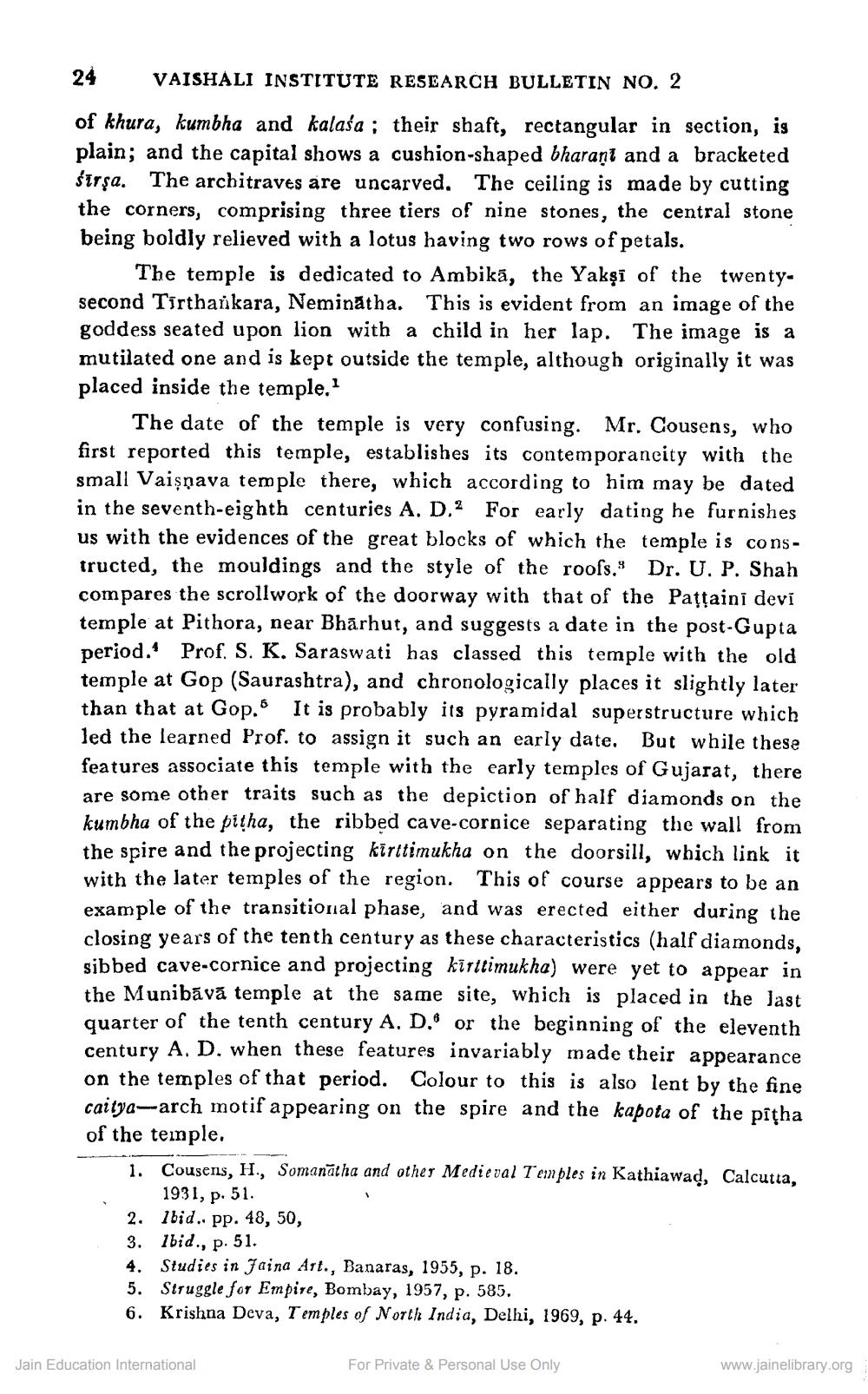________________
24
VAISHALI INSTITUTE RESEARCH BULLETIN NO. 2
of khura, kumbha and kalasa; their shaft, rectangular in section, is plain; and the capital shows a cushion-shaped bharaṇi and a bracketed śirşa. The architraves are uncarved. The ceiling is made by cutting the corners, comprising three tiers of nine stones, the central stone being boldly relieved with a lotus having two rows of petals.
The temple is dedicated to Ambikā, the Yakşi of the twentysecond Tirtharkara, Neminātha. This is evident from an image of the goddess seated upon lion with a child in her lap. The image is a mutilated one and is kept outside the temple, although originally it was placed inside the temple.?
The date of the temple is very confusing. Mr. Cousens, who first reported this temple, establishes its contemporaneity with the small Vaişnava temple there, which according to him may be dated in the seventh-eighth centuries A. D.2 For early dating he furnishes us with the evidences of the great blocks of which the temple is constructed, the mouldings and the style of the roofs. Dr. U. P. Shah compares the scrollwork of the doorway with that of the Pațțaini devi temple at Pithora, near Bhārhut, and suggests a date in the post-Gupta period.' Prof. S. K. Saraswati has classed this temple with the old temple at Gop (Saurashtra), and chronologically places it slightly later than that at Gop. It is probably its pyramidal superstructure which led the learned Prof. to assign it such an early date. But while these features associate this temple with the early temples of Gujarat, there are some other traits such as the depiction of half diamonds on the kumbha of the pitha, the ribbed cave-cornice separating the wall from the spire and the projecting kirttimukha on the doorsill, which link it with the later temples of the region. This of course appears to be an example of the transitional phase, and was erected either during the closing years of the tenth century as these characteristics (half diamonds, sibbed cave-cornice and projecting kiritimukha) were yet to appear in the Munibāvā temple at the same site, which is placed in the last quarter of the tenth century A. D. or the beginning of the eleventh century A. D. when these features invariably made their appearance on the temples of that period. Colour to this is also lent by the fine caitya-arch motif appearing on the spire and the kapota of the pitha of the temple. 1. Cousens, H., Somanātha and other Medieval Temples in Kathiawad, Calcutta,
1931, p. 51. 2. Ibid. pp. 48, 50, 3. Ibid., p. 51. 4. Studies in Jaina Art., Banaras, 1955, p. 18. 5. Struggle for Empire, Bombay, 1957, p. 585. 6. Krishna Deva, Temples of North India, Delhi, 1969, p. 44.
Jain Education International
For Private & Personal Use Only
www.jainelibrary.org




